Abstract
1. The kinin-forming activity of hind limb lymph and of plasma has been examined in rabbits before and after thermal injury.
2. Neither plasma nor lymph contained much active kallikrein activity but the enzyme was evident in samples treated with glass or with acid.
3. There was little or no increase in the activity of enzyme activated by glass after thermal injury, but an increase in the activity of enzyme activated by acid regularly occurred.
4. There were two increases in the activity of enzyme activated by acid—one about 2 h and the other 4-6 h after thermal injury. They corresponded to increases in vascular permeability as indicated by increases in the concentration of lymph protein.
5. There was considerably more kininogen in the lymph and plasma than was used in the assays of kallikrein activity, showing that the increased kinin-forming activity in lymph was not the result of the passage of kininogen from the plasma.
6. The increase in activity in lymph was not usually accompanied by a similar increase in the plasma. However, an increase in the activity of enzyme activated by acid sometimes occurred in the plasma simply as a result of prolonged anaesthesia.
7. It is suggested that whereas the enzyme activated by glass is a measure of prekallikrein, the acid activatable enzyme appears as a result of the dissociation of a kallikrein-inhibitor complex. An increase in the concentration of this complex is therefore an indication of the preceding activation of kallikrein.
Full text
PDF
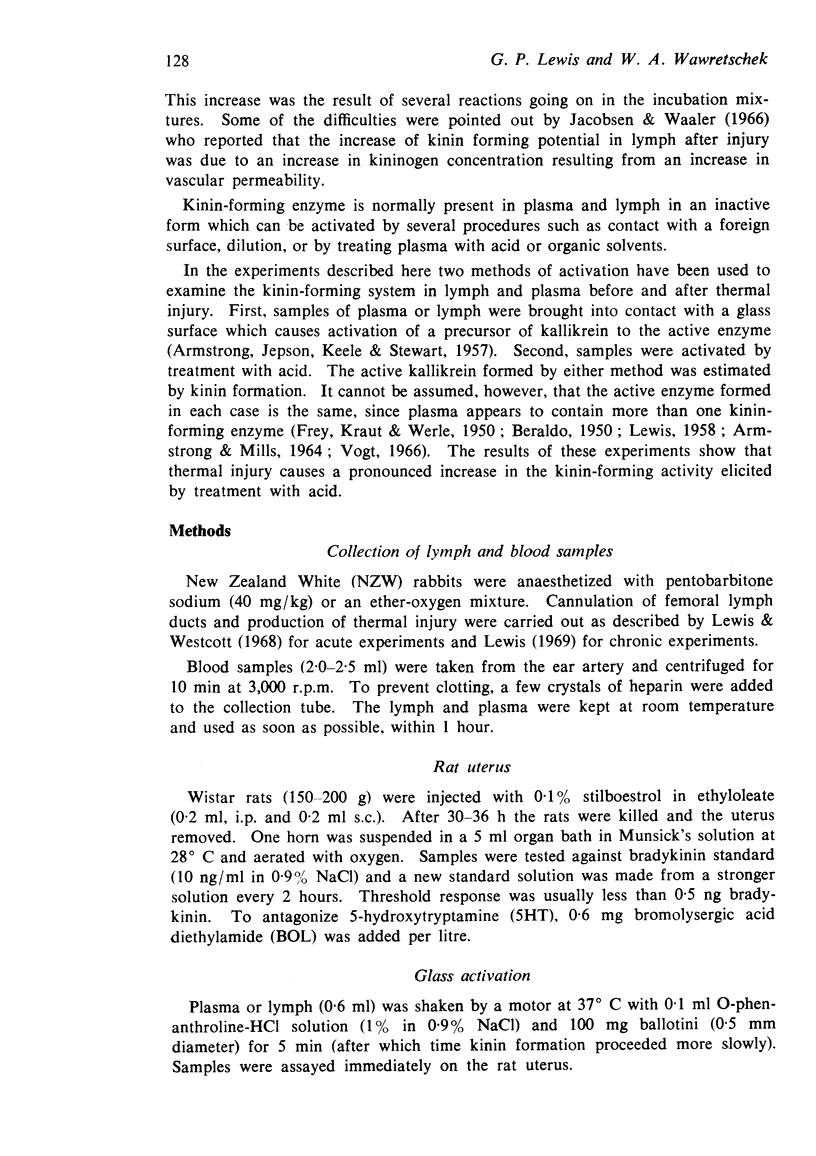
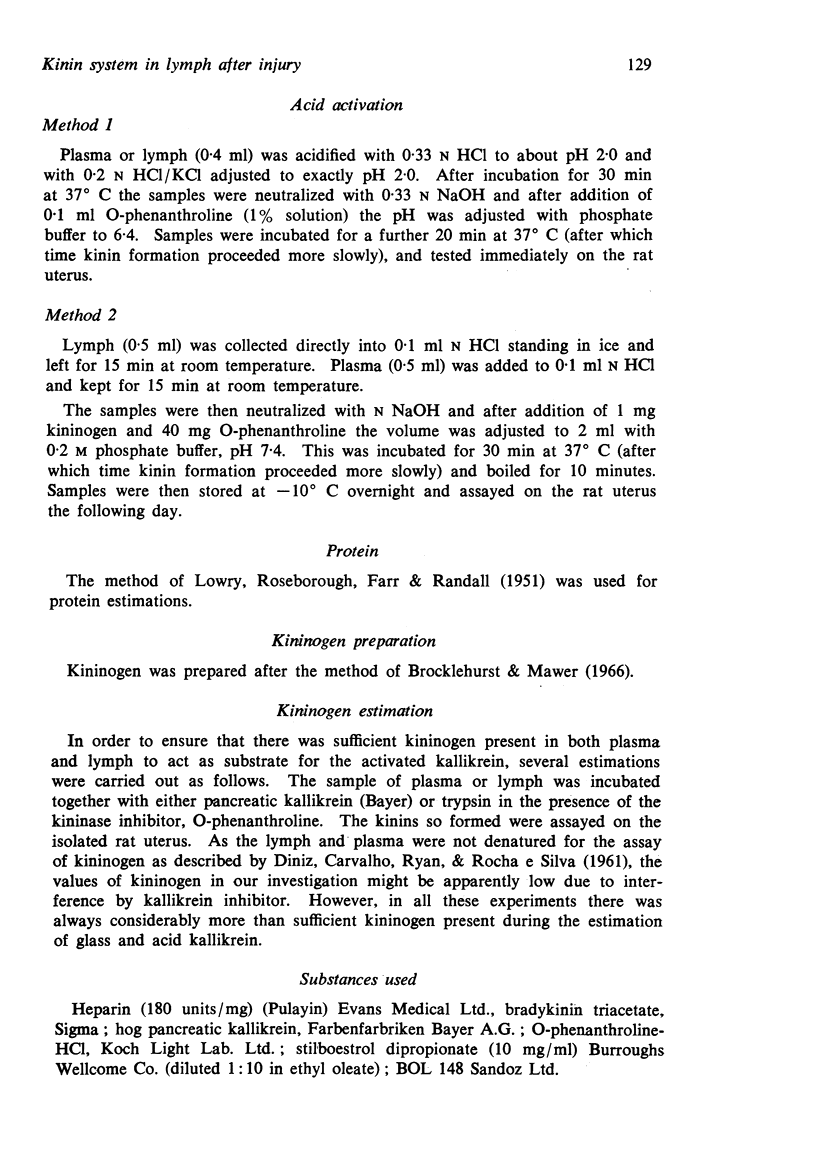

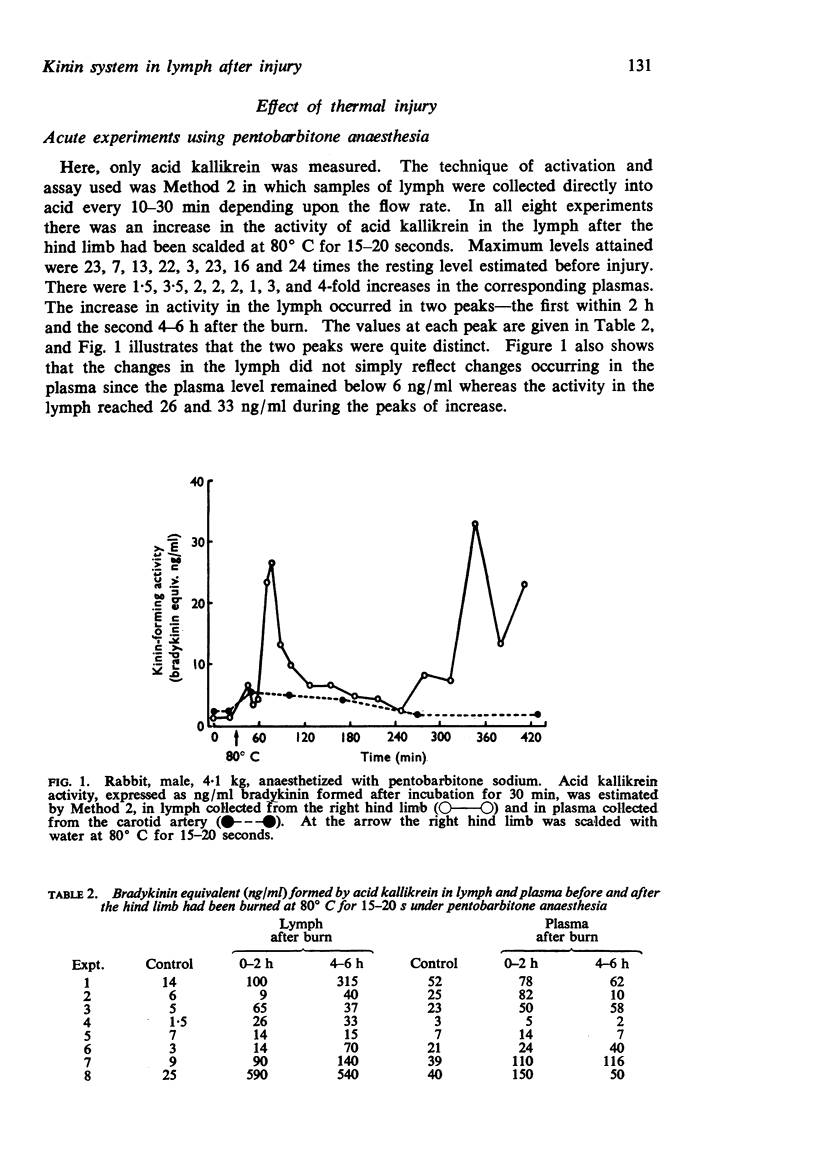
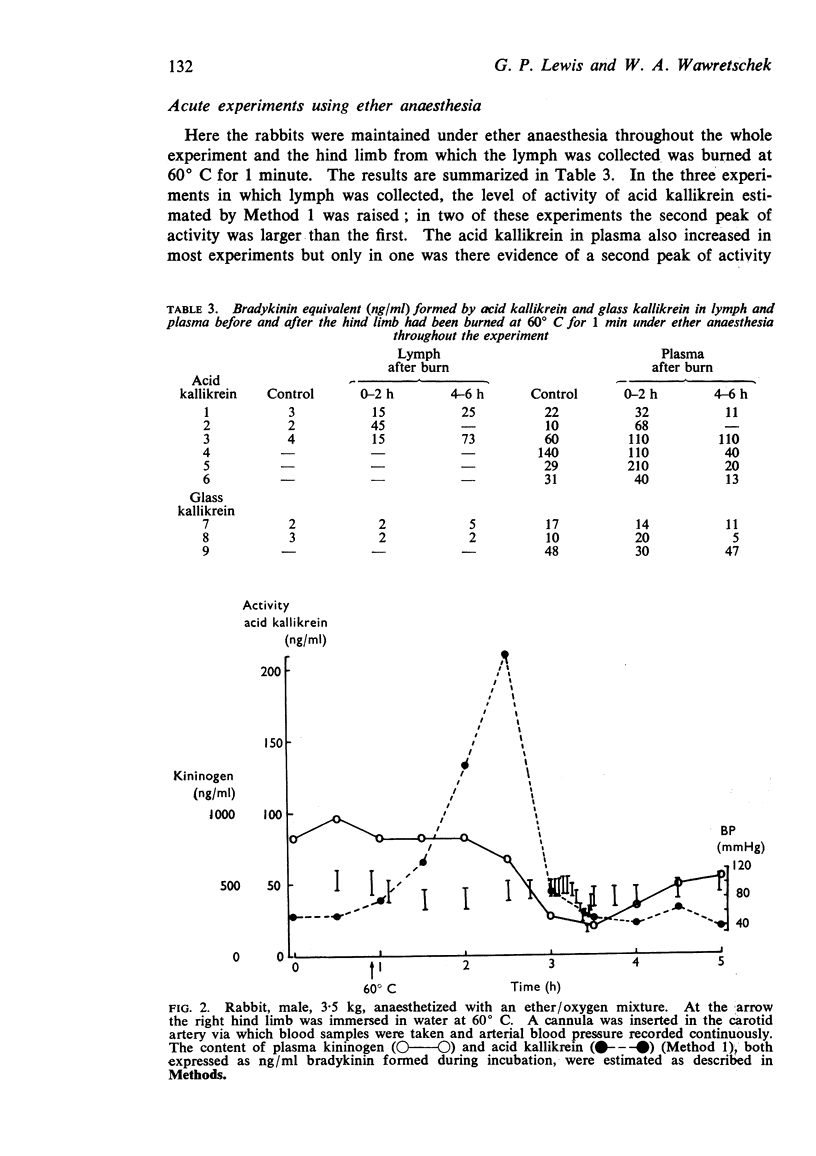


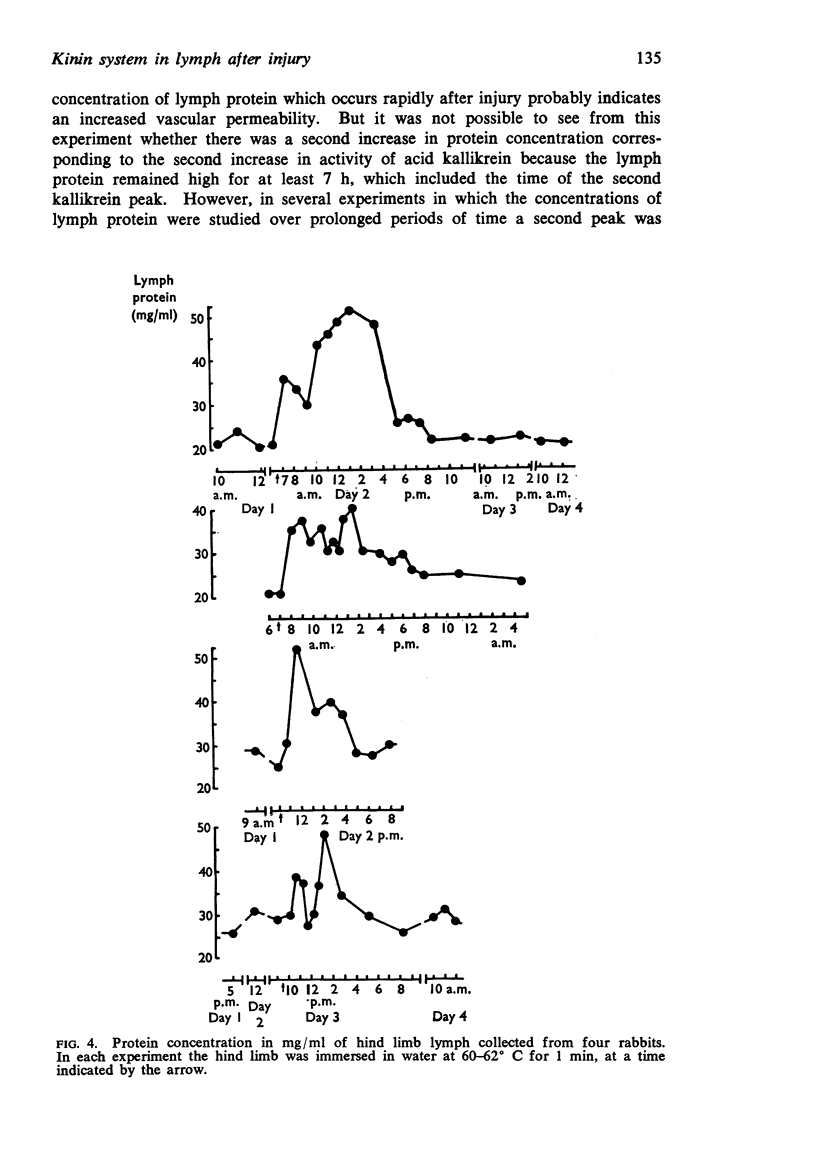

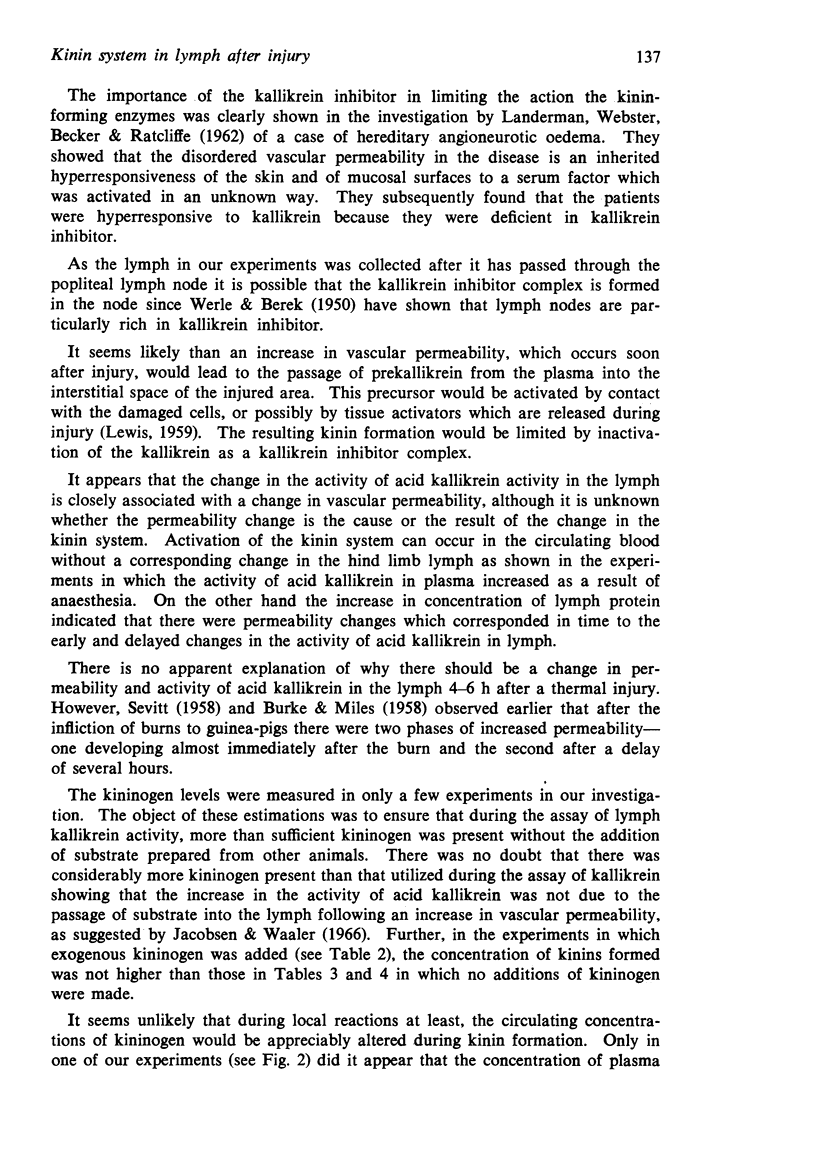


Selected References
These references are in PubMed. This may not be the complete list of references from this article.
- ARMSTRONG D. A., MILLS G. L. A HIGHLY PURIFIED KININ-FORMING ENZYME FROM HUMAN PLASMA. Biochem Pharmacol. 1964 Oct;13:1393–1402. doi: 10.1016/0006-2952(64)90188-1. [DOI] [PubMed] [Google Scholar]
- ARMSTRONG D., JEPSON J. B., KEELE C. A., STEWART J. W. Pain-producing substance in human inflammatory exudates and plasma. J Physiol. 1957 Feb 15;135(2):350–370. doi: 10.1113/jphysiol.1957.sp005715. [DOI] [PMC free article] [PubMed] [Google Scholar]
- BERALDO W. T. Formation of bradykinin in anaphylactic and peptone shock. Am J Physiol. 1950 Nov;163(2):283–289. doi: 10.1152/ajplegacy.1950.163.2.283. [DOI] [PubMed] [Google Scholar]
- BURKE J. F., MILES A. A. The sequence of vascular events in early infective inflammation. J Pathol Bacteriol. 1958 Jul;76(1):1–19. [PubMed] [Google Scholar]
- Brocklehurst W. E., Mawer G. E. The purification of a kininogen from human plasma. Br J Pharmacol Chemother. 1966 Aug;27(2):256–276. doi: 10.1111/j.1476-5381.1966.tb01661.x. [DOI] [PMC free article] [PubMed] [Google Scholar]
- Cîrstea M., Suhaciu G., Butculescu I. Bradykinin and anaphylactic shock in dogs, guinea-pigs and rabbits. Arch Int Physiol Biochim. 1965 Mar;73(2):231–240. doi: 10.3109/13813456509084249. [DOI] [PubMed] [Google Scholar]
- DINIZ C. R., CARVALHO I. F. A micromethod for determination of bradykininogen under several conditions. Ann N Y Acad Sci. 1963 Feb 4;104:77–89. doi: 10.1111/j.1749-6632.1963.tb17654.x. [DOI] [PubMed] [Google Scholar]
- DINIZ C. R., CARVALHO I. F., RYAN J., ROCHA E SILVA M. A micromethod for the determination of bradykininogen in blood plasma. Nature. 1961 Dec 23;192:1194–1195. doi: 10.1038/1921194a0. [DOI] [PubMed] [Google Scholar]
- EDERY H., LEWIS G. P. KININ-FORMING ACTIVITY AND HISTAMINE IN LYMPH AFTER TISSUE INJURY. J Physiol. 1963 Dec;169:568–583. doi: 10.1113/jphysiol.1963.sp007280. [DOI] [PMC free article] [PubMed] [Google Scholar]
- Eisen V. Observations on intrinsic kinin-forming factors in human plasma: the effect of acid, acetone, chloroform, heat and euglobulin separation on kinin formation. J Physiol. 1963 May;166(3):496–513. doi: 10.1113/jphysiol.1963.sp007119. [DOI] [PMC free article] [PubMed] [Google Scholar]
- Jacobsen S. Substrates for plasma kinin-forming enzymes in human, dog and rabbit plasmas. Br J Pharmacol Chemother. 1966 Feb;26(2):403–411. doi: 10.1111/j.1476-5381.1966.tb01920.x. [DOI] [PMC free article] [PubMed] [Google Scholar]
- Jacobsen S., Waaler B. A. The effect of scalding on the content of kininogen and kininase in limb lymph. Br J Pharmacol Chemother. 1966 May;27(1):222–229. doi: 10.1111/j.1476-5381.1966.tb01657.x. [DOI] [PMC free article] [PubMed] [Google Scholar]
- LANDERMAN N. S., WEBSTER M. E., BECKER E. L., RATCLIFFE H. E. Hereditary angioneurotic edema. II. Deficiency of inhibitor for serum globulin permeability factor and/or plasma kallikrein. J Allergy. 1962 Jul-Aug;33:330–341. doi: 10.1016/0021-8707(62)90032-1. [DOI] [PubMed] [Google Scholar]
- LEWIS G. P. Formation of plasma kinins by plasmin. J Physiol. 1958 Feb 17;140(2):285–300. doi: 10.1113/jphysiol.1958.sp005934. [DOI] [PMC free article] [PubMed] [Google Scholar]
- LEWIS G. P. Plasma-kinin-forming enzymes in body fluids and tissues. J Physiol. 1959 Oct;147:458–468. doi: 10.1113/jphysiol.1959.sp006256. [DOI] [PMC free article] [PubMed] [Google Scholar]
- LOWRY O. H., ROSEBROUGH N. J., FARR A. L., RANDALL R. J. Protein measurement with the Folin phenol reagent. J Biol Chem. 1951 Nov;193(1):265–275. [PubMed] [Google Scholar]
- Lewis G. P. Changes in the composition of rabbit hind limb lymph after thermal injury. J Physiol. 1969 Dec;205(3):619–634. doi: 10.1113/jphysiol.1969.sp008986. [DOI] [PMC free article] [PubMed] [Google Scholar]
- SEVITT S. Early and delayed oedema and increase in capillary permeability after burns of the skin. J Pathol Bacteriol. 1958 Jan;75(1):27–37. doi: 10.1002/path.1700750105. [DOI] [PubMed] [Google Scholar]


